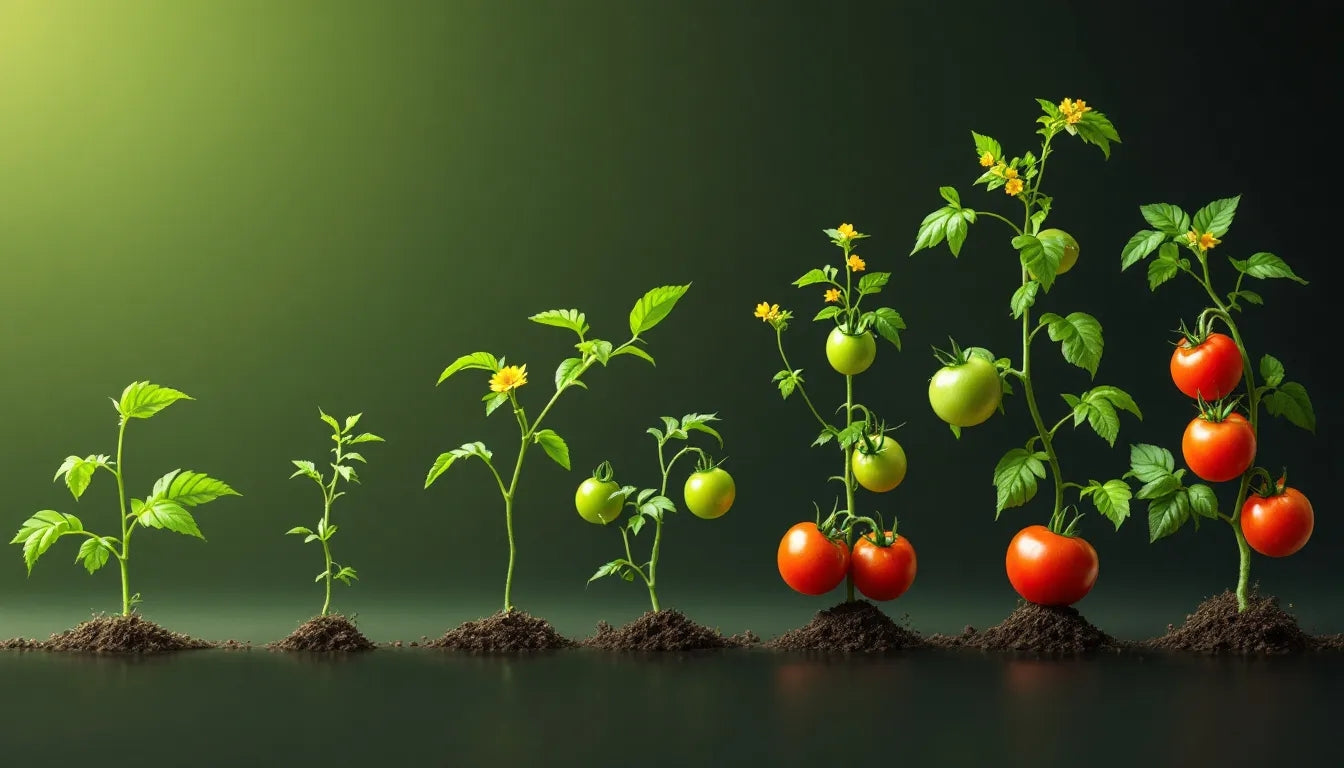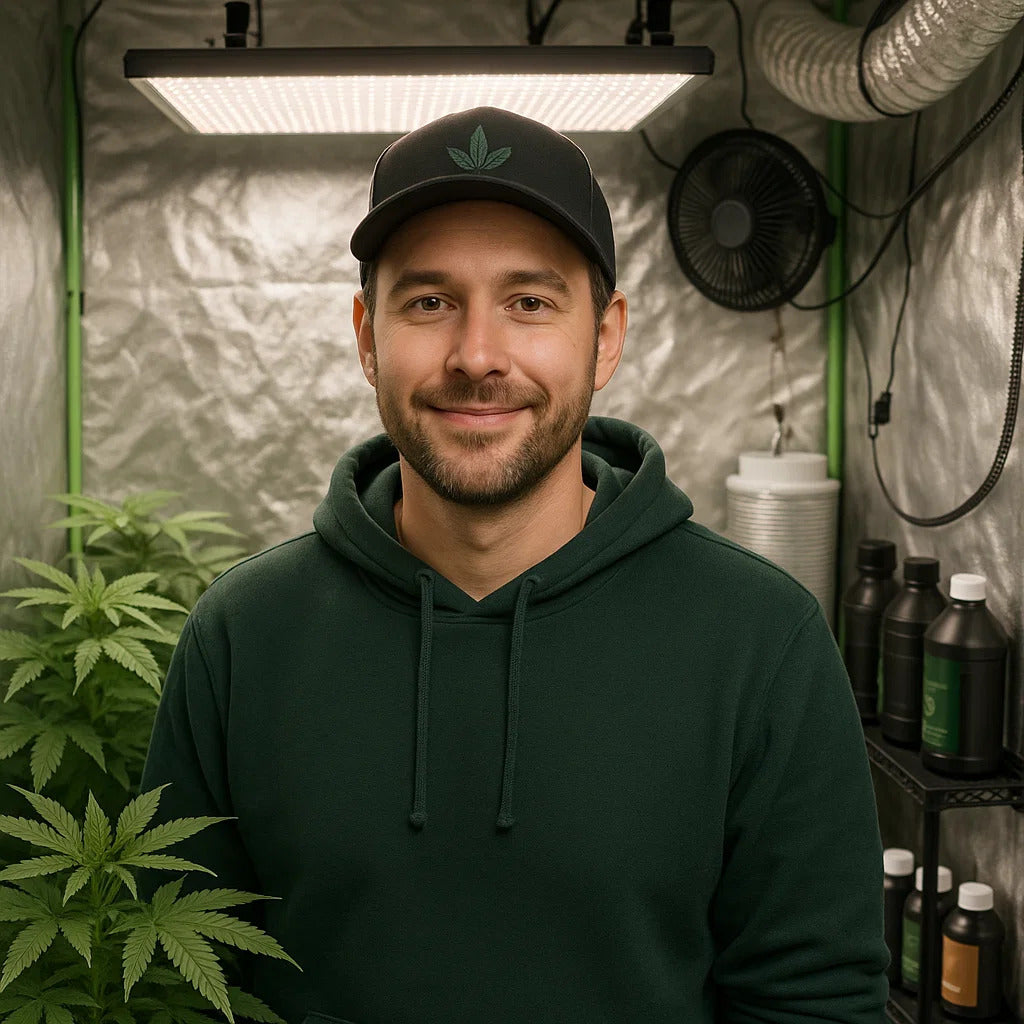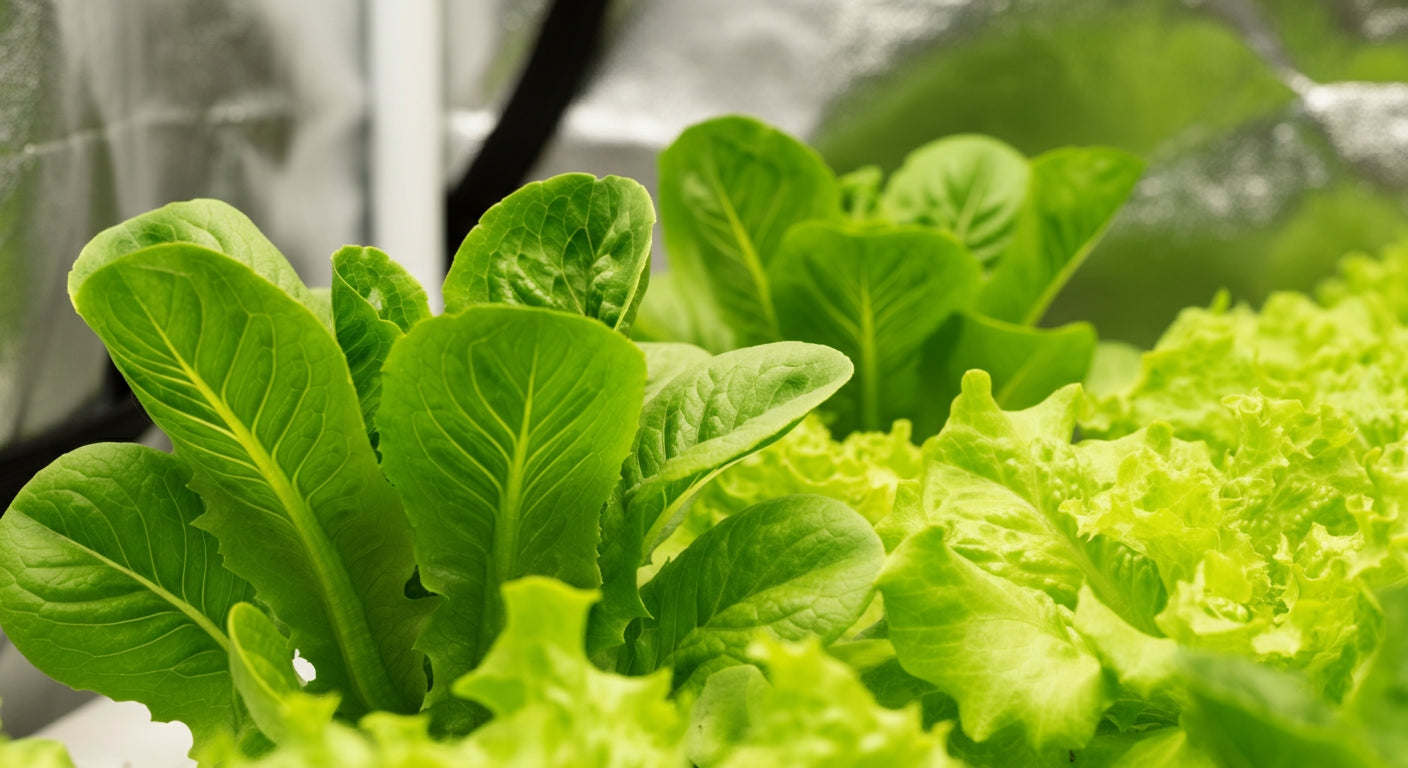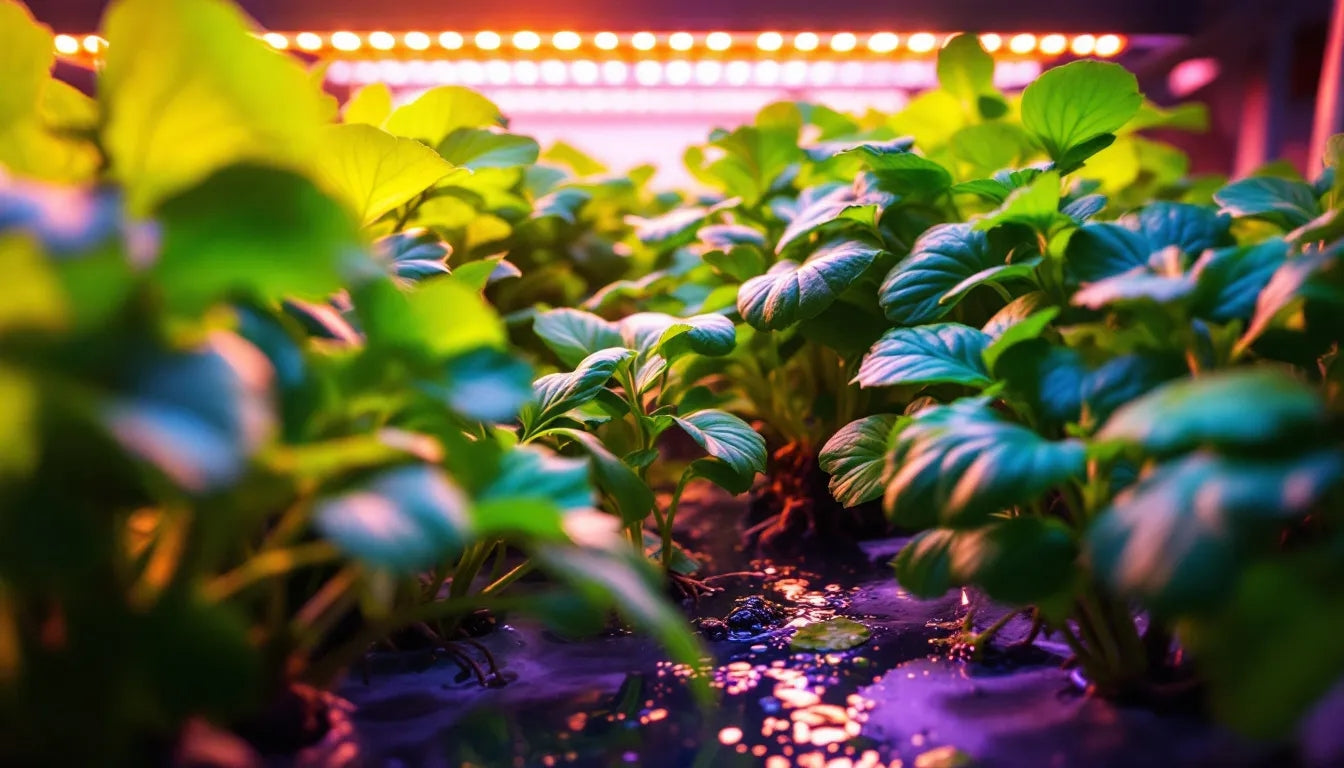
Understanding Plants Growing Timelines
The question "how long does it take to grow plants" doesn't have a single answer, as growing timelines vary significantly based on strain genetics, growing methods, environmental conditions, and cultivation techniques. Understanding these factors helps growers plan their cultivation cycles and set realistic expectations for harvest timing.
Plant growing timelines typically range from 10 weeks for fast autoflower strains to 8+ months for outdoor photoperiod varieties. Indoor growing offers more control over timing, while outdoor cultivation must work within natural seasonal cycles and local climate conditions.
Modern growing techniques and equipment have enabled growers to optimize timelines while maintaining quality. Professional growing setups can achieve faster development through precise environmental control, optimal nutrition, and advanced cultivation methods.
Indoor Plant Growing Timeline
Indoor plant cultivation offers the most predictable timelines since growers control all environmental factors including lighting schedules, temperature, humidity, and nutrition. This control enables consistent results and allows for year-round growing regardless of outdoor conditions.
Photoperiod Plant Indoor Timeline
Photoperiod plant strains require specific light cycles to trigger flowering, giving growers complete control over when plants transition between growth stages. The complete indoor timeline typically spans 14-20 weeks from seed to harvest.
Germination Phase (3-7 Days) Seeds germinate within 3-7 days under optimal conditions of 70-80°F temperature and high humidity. Quality seeds from reputable sources typically show faster, more consistent germination rates.
Seedling Stage (2-3 Weeks) Young plants establish root systems and develop first true leaves during this vulnerable period. Seedlings require gentle lighting and careful moisture management to prevent stress and establish healthy development patterns.
Vegetative Growth (4-8 Weeks) Vegetative duration depends on desired plant size and growing space constraints. Longer vegetative periods produce larger plants with higher yield potential, while shorter periods enable faster harvest cycles.
Flowering Stage (8-12 Weeks) Flowering duration varies by strain genetics, with indica varieties typically finishing faster (8-9 weeks) than sativa strains (10-12 weeks). Environmental conditions and plant health also influence flowering duration.
Autoflower Plant Indoor Timeline
Autoflower strains automatically transition from vegetative to flowering based on age rather than light cycles, enabling much faster growing timelines. Complete autoflower cycles typically require 10-14 weeks from seed to harvest.
Rapid Development Phases Autoflowers progress through all growth stages more quickly than photoperiod varieties. Germination occurs within 2-5 days, followed by 2-3 weeks of combined seedling and early vegetative growth.
Automatic Flowering Transition Most autoflower strains begin flowering automatically after 3-4 weeks regardless of light cycle. This rapid transition requires immediate nutrition adjustments and environmental optimization for flowering success.
Accelerated Harvest Schedule Autoflower flowering typically completes within 6-8 weeks, enabling harvest 10-14 weeks from germination. This timeline allows multiple indoor harvests per year with proper planning and continuous cultivation cycles.
Optimizing Indoor Growing Speed
Professional grow tent systems enable optimal environmental control that can reduce growing timelines while maintaining quality. Precise lighting, ventilation, and environmental management accelerate plant development through all growth stages.
Quality equipment eliminates environmental stresses that can slow plant development or extend growing timelines. Consistent temperatures, optimal humidity levels, and proper air circulation enable plants to focus energy on growth rather than stress recovery.
Advanced cultivation techniques including training methods, optimal nutrition programs, and environmental optimization can reduce total growing time by 1-2 weeks while potentially increasing yields.
Outdoor Plant Growing Timeline
Outdoor plant cultivation works within natural seasonal cycles, typically requiring longer timelines but often producing larger plants and higher yields. Outdoor timelines depend heavily on local climate conditions and strain selection.
Seasonal Growing Patterns
Outdoor photoperiod plants follow natural light cycles, beginning vegetative growth in spring and flowering as daylight hours decrease in late summer. This natural cycle typically spans 6-8 months from seed to harvest.
Spring Preparation (March-May) Most outdoor growers start seeds indoors during late winter or early spring, allowing 4-6 weeks of protected growth before outdoor transplanting. This indoor start extends the effective growing season and produces stronger plants.
Summer Vegetative Growth (May-August) Outdoor plants experience vigorous vegetative growth during long summer days, often reaching substantial sizes. Proper plant training and support systems become crucial for managing large outdoor plants.
Fall Flowering and Harvest (August-October) Flowering begins naturally as daylight hours decrease in late summer. Harvest timing depends on strain genetics and local climate, typically occurring between September and October in northern hemisphere locations.
Climate Considerations
Growing timelines vary significantly based on local climate conditions. Mediterranean climates enable longer growing seasons, while shorter seasons require earlier-finishing strains or greenhouse protection.
Cold climate growers must select strains that finish flowering before first frost dates. Fast-finishing strains complete flowering in 7-8 weeks, while longer-season varieties may require 10-12 weeks.
Autoflower strains can enable multiple outdoor harvests in suitable climates, with some growers achieving 2-3 harvests between spring and fall in favorable conditions.
Maximizing Outdoor Growing Seasons
Greenhouse structures extend outdoor growing seasons by providing weather protection while maintaining natural lighting benefits. Simple hoop houses or cold frames can add weeks to both ends of the growing season.
Light deprivation techniques using covers or structures enable growers to control flowering timing, potentially allowing earlier harvests or multiple crops per season in suitable climates.
Starting plants indoors and transplanting outdoors after frost danger passes maximizes the effective growing season while producing larger, more productive plants.

Factors Affecting Plant Growing Speed
Multiple factors influence how long plants take to grow, from genetics and environmental conditions to cultivation techniques and equipment quality. Understanding these variables helps growers optimize their timelines while maintaining harvest quality.
Strain Genetics Impact
Strain genetics represent the most significant factor determining growing timelines. Indica strains typically mature faster than sativa varieties, while hybrid strains offer characteristics between the two extremes.
Fast-finishing strains complete flowering in 7-8 weeks, making them ideal for growers seeking quick harvests or multiple crops per year. These varieties often sacrifice some yield potential for faster development.
Long-season strains may require 12+ weeks of flowering but often produce exceptional yields and unique cannabinoid profiles. These varieties reward patient growers with premium quality harvests.
Environmental Optimization
Optimal environmental conditions accelerate plant development through all growth stages. Consistent temperatures, proper humidity levels, and adequate air circulation enable plants to maximize growth rates without stress.
Complete grow tent systems provide precise environmental control that can reduce growing timelines by maintaining ideal conditions throughout the cultivation cycle.
Temperature fluctuations, inadequate lighting, or poor air circulation can extend growing timelines significantly. Plants stressed by suboptimal conditions divert energy from growth to survival, slowing overall development.
Nutrition and Feeding Programs
Proper nutrition throughout the growing cycle supports maximum development rates while maintaining plant health. Nutrient deficiencies or imbalances can significantly slow plant growth and extend cultivation timelines.
Quality feeding programs provide balanced nutrition tailored to each growth stage, supporting rapid development without causing nutrient burn or other feeding-related problems.
Hydroponic growing systems often enable faster growth rates compared to soil methods due to more precise nutrient delivery and better oxygen availability to root systems.
Training and Plant Management
Plant training techniques can influence growing timelines both positively and negatively. Aggressive training may temporarily slow growth while plants recover, but ultimately enables better light utilization and higher yields.
Low-stress training methods minimize recovery time while optimizing plant structure for improved light penetration and flower development. These techniques may add 1-2 weeks to vegetative periods but often increase final yields.
Proper plant management including pruning, defoliation, and support systems helps plants focus energy on productive growth rather than maintaining unnecessary plant material.
Speeding Up Plant Growing Timelines
Experienced growers employ various techniques to optimize growing timelines without sacrificing quality. These methods focus on eliminating growth barriers and maximizing plant development rates through all cultivation stages.
Advanced Environmental Control
Precise environmental management accelerates plant development by maintaining optimal conditions for photosynthesis and growth. Professional grow tent setups enable this level of control in compact, manageable systems.
LED lighting systems with spectrum control optimize photosynthetic efficiency while reducing heat stress that can slow plant development. Proper light scheduling and intensity management support maximum growth rates.
CO2 supplementation in sealed growing environments can increase growth rates by 20-30% when combined with optimal lighting and environmental conditions. This technique requires advanced environmental control systems.
Optimized Cultivation Techniques
Hydroponic growing systems often enable faster development compared to traditional soil methods. Deep Water Culture (DWC) and other hydroponic techniques provide optimal root zone conditions for rapid growth.
Starting with quality genetics specifically bred for fast development reduces overall growing timelines. Many modern strains have been selected for rapid maturation without sacrificing potency or yield.
Continuous harvest techniques using clones enable overlapping growing cycles that maximize annual production. Experienced growers can achieve 4-6 harvests per year using staggered planting schedules.
Avoiding Common Delays
Preventing problems that slow plant development represents the most effective approach to maintaining optimal growing timelines. Environmental stress, pest issues, and nutritional problems can add weeks to cultivation cycles.
Quality equipment reduces the likelihood of equipment failures or environmental fluctuations that stress plants and slow development. Investing in reliable systems prevents costly delays and crop losses.
Proper planning and preparation before starting grows ensures all necessary supplies and equipment are available when needed, preventing delays due to missing components or supplies.
Growth Stage Breakdown and Timing
Understanding the specific duration and requirements of each growth stage helps growers plan their cultivation cycles and optimize plant development throughout the growing process.
Germination Timing and Optimization
Germination typically requires 2-7 days under optimal conditions, though some seeds may take longer. Factors affecting germination speed include seed age, storage conditions, and germination environment.
Fresh, properly stored seeds germinate faster and more consistently than old or poorly stored genetics. Maintaining consistent temperature and moisture during germination ensures rapid, uniform sprouting.
Pre-soaking seeds for 12-24 hours in pure water can accelerate germination by softening seed shells and initiating metabolic processes. This technique often reduces germination time by 1-2 days.
Seedling Development Duration
Seedling stage typically lasts 2-3 weeks as plants establish root systems and develop first true leaves. Environmental conditions significantly impact seedling development speed and success rates.
Optimal seedling conditions include gentle lighting, consistent moisture, and temperatures between 70-75°F. Stress during this vulnerable stage can permanently affect plant development and extend growing timelines.
Quality growing medium and containers support healthy root development during the seedling stage. Poor drainage or compacted soil can slow root growth and extend this critical development period.
Vegetative Growth Management
Vegetative duration varies widely based on desired plant size and growing constraints. Indoor growers typically maintain vegetative growth for 4-8 weeks, while outdoor plants may vegetate for several months.
Training techniques implemented during vegetative growth can extend this stage by 1-2 weeks but often result in significantly higher yields. The time investment in training typically pays dividends in final harvest weight.
Nutrition programs during vegetative growth focus on nitrogen-rich fertilizers that support rapid leaf and stem development. Proper feeding accelerates vegetative growth while establishing strong plant structure.
Flowering Timeline Variables
Flowering duration depends primarily on strain genetics but can be influenced by environmental conditions and plant health. Indica strains typically finish in 8-9 weeks, while sativas may require 10-12+ weeks.
Environmental stress during flowering can extend this stage significantly. Maintaining stable conditions throughout flowering ensures plants complete development within expected timeframes.
Harvest timing within the flowering window affects both timeline and final product characteristics. Harvesting slightly early reduces overall growing time but may impact potency and yield.

Planning Multiple Growing Cycles
Advanced growers often plan multiple growing cycles to maximize annual production while maintaining consistent harvest schedules. This approach requires careful timing coordination and adequate growing space or equipment.
Perpetual Harvest Systems
Perpetual harvest systems maintain plants in different growth stages simultaneously, enabling regular harvests every 6-8 weeks. This approach requires separate spaces for vegetative and flowering plants.
Cloning systems enable identical genetics across multiple growing cycles while eliminating germination time from subsequent harvests. Master plants maintained in vegetative state provide continuous clone supplies.
Staggered planting schedules every 2-4 weeks create overlapping growing cycles that produce harvests at regular intervals. This approach maximizes growing space utilization and provides consistent supply.
Seasonal Planning for Outdoor Growers
Outdoor growers must plan cultivation cycles around local climate patterns and seasonal limitations. Starting plants indoors extends effective growing seasons while protecting young plants from harsh conditions.
Multiple autoflower crops can be grown outdoors in suitable climates, with some growers achieving 2-3 harvests between spring and fall frost dates. This approach maximizes annual outdoor production.
Greenhouse structures enable season extension and weather protection while maintaining natural lighting benefits. Heated greenhouses can extend growing seasons significantly in cold climate regions.
Optimizing Growing Space Efficiency
Compact growing systems enable multiple growing cycles in limited spaces through efficient design and optimal environmental control. These systems maximize production per square foot.
Vertical growing techniques and multi-level systems can increase plant capacity within existing growing spaces. These approaches enable more frequent harvests without requiring additional floor space.
Automated systems reduce labor requirements for multiple growing cycles while maintaining consistent environmental conditions across all plants and growth stages.
Troubleshooting Timeline Delays
Various factors can extend plant growing timelines beyond expected durations. Identifying and addressing these issues quickly minimizes delays and maintains cultivation schedules.
Environmental Stress Factors
Temperature extremes slow plant development and can extend growing timelines significantly. Both excessive heat and cold temperatures stress plants and divert energy from growth to survival responses.
Inadequate lighting or poor light distribution extends vegetative periods and can delay flowering completion. Insufficient light intensity forces plants to work harder for photosynthesis, slowing overall development.
Humidity imbalances affect plant transpiration and nutrient uptake, potentially slowing growth rates. Both excessive and insufficient humidity can stress plants and extend growing timelines.
Nutritional Issues Impact
Nutrient deficiencies slow plant development by limiting essential processes required for growth. Common deficiencies include nitrogen (slowing vegetative growth) and phosphorus (extending flowering periods).
Nutrient toxicities can be equally problematic, causing plants to divert energy toward processing excess nutrients rather than focusing on growth and development.
pH imbalances prevent proper nutrient uptake even when adequate nutrition is provided. Maintaining proper pH ranges ensures plants can access available nutrients efficiently.
Pest and Disease Problems
Pest infestations stress plants and slow development as they divert energy toward defense mechanisms rather than growth. Early identification and treatment minimize impact on growing timelines.
Fungal diseases can significantly extend growing periods or completely destroy crops if not addressed quickly. Proper environmental management prevents most disease issues while maintaining optimal growing conditions.
Root problems including rot or binding severely impact plant development and can add weeks to growing timelines. Quality growing containers and proper drainage prevent most root-related issues.
Conclusion: Managing Your Plant Growing Timeline
Plant growing timelines vary significantly based on genetics, growing methods, environmental conditions, and cultivation techniques. Understanding these factors enables growers to plan realistic schedules while optimizing development speed without sacrificing quality.
Professional grow tent systems provide the environmental control necessary to achieve predictable timelines while maximizing plant potential. Quality equipment eliminates variables that can extend growing periods unexpectedly.
Whether growing fast autoflowers for quick harvests or premium photoperiod strains for maximum quality, focus on maintaining optimal conditions throughout the cultivation cycle. Consistent environmental management, proper nutrition, and attention to plant health ensure plants develop within expected timeframes while achieving their full genetic potential.

Lena Myles
I'm a mushroom enthusiast and home cook based in Oregon. I'm passionate about foraging and creating fungi-focused recipes, especially delicious, plant-based dishes using gourmet mushrooms like trumpet, shiitake, and oyster. When I’m not in the kitchen, you’ll usually find me wandering the woods in search of new wild flavors.


